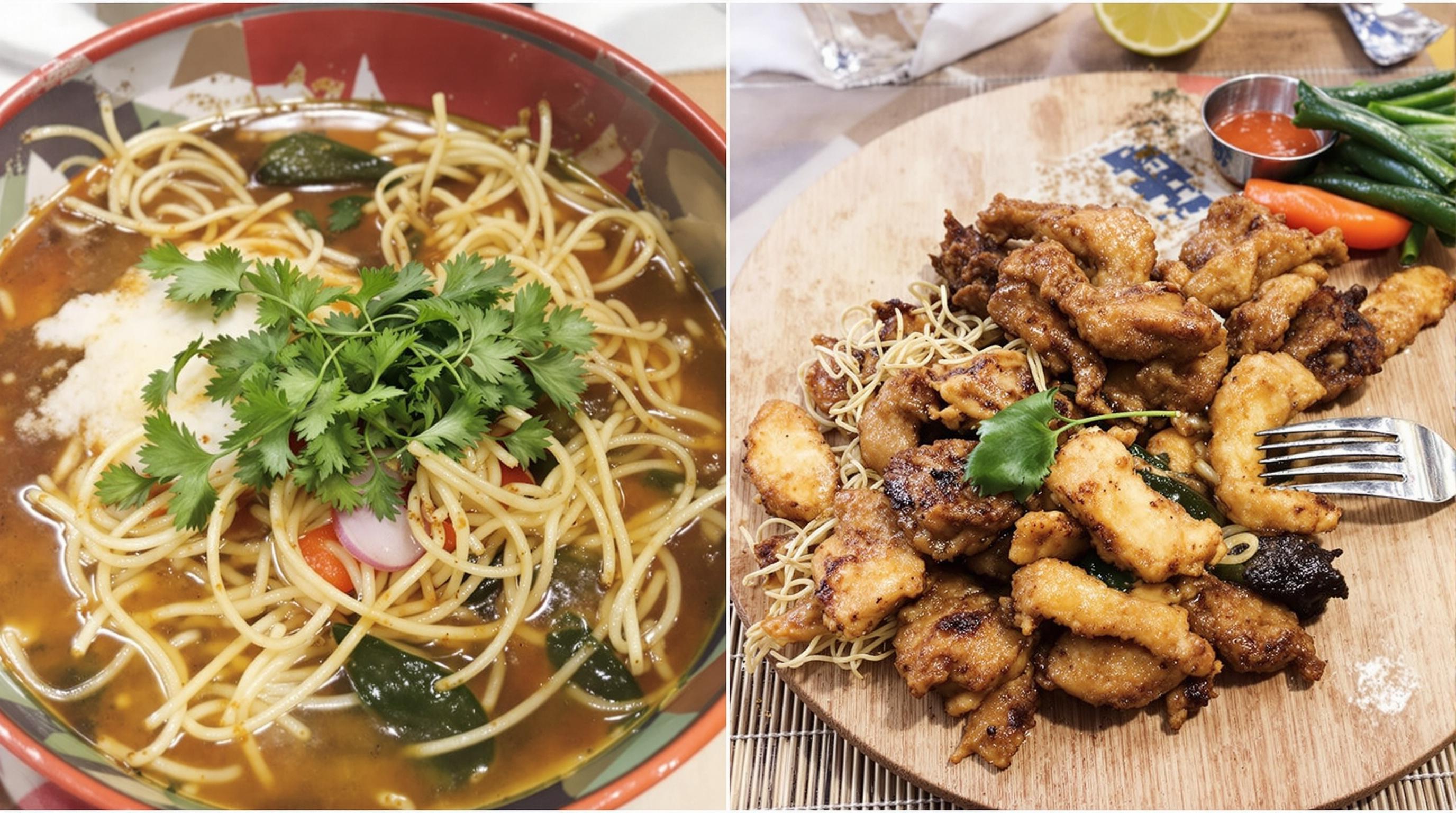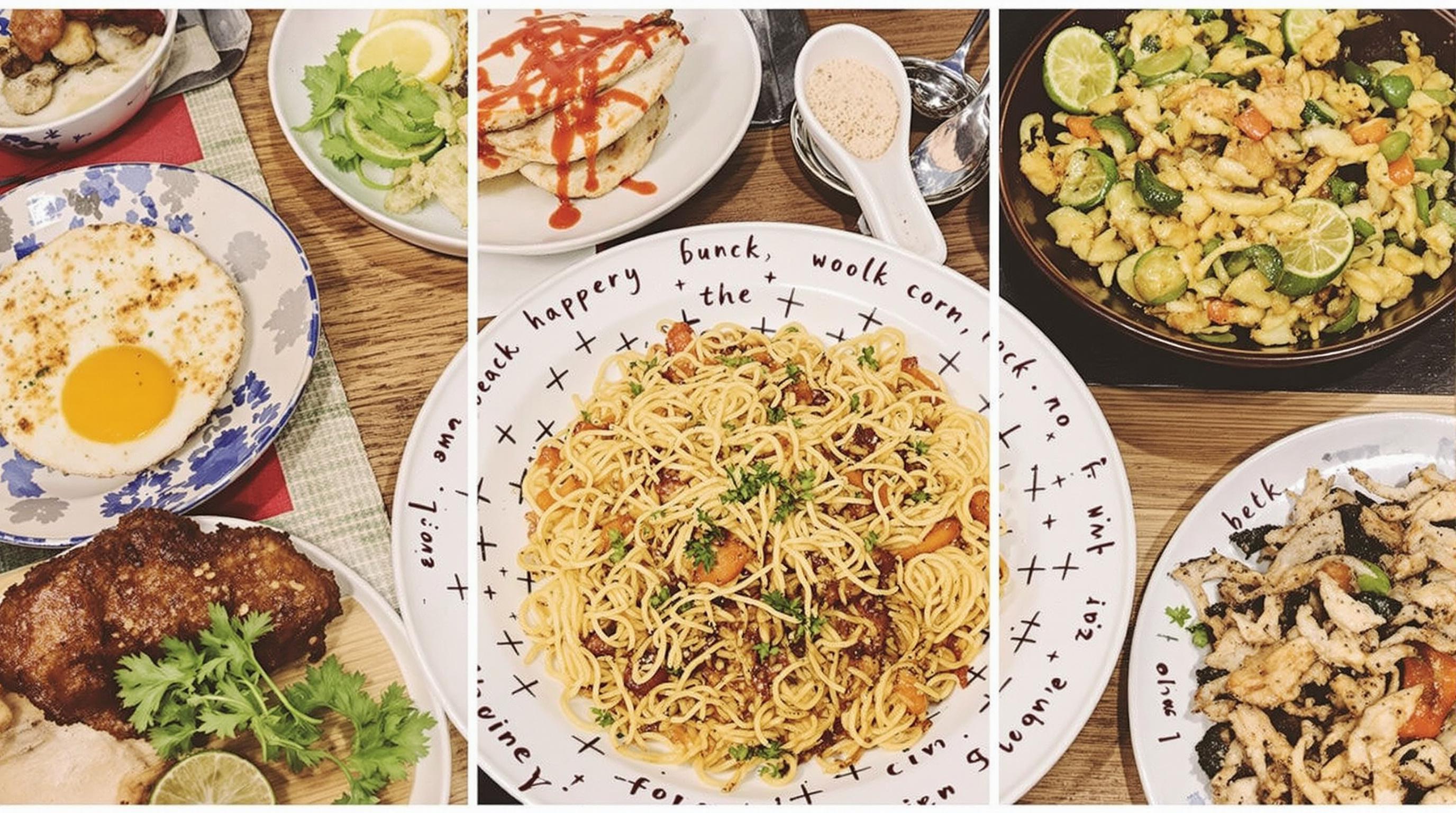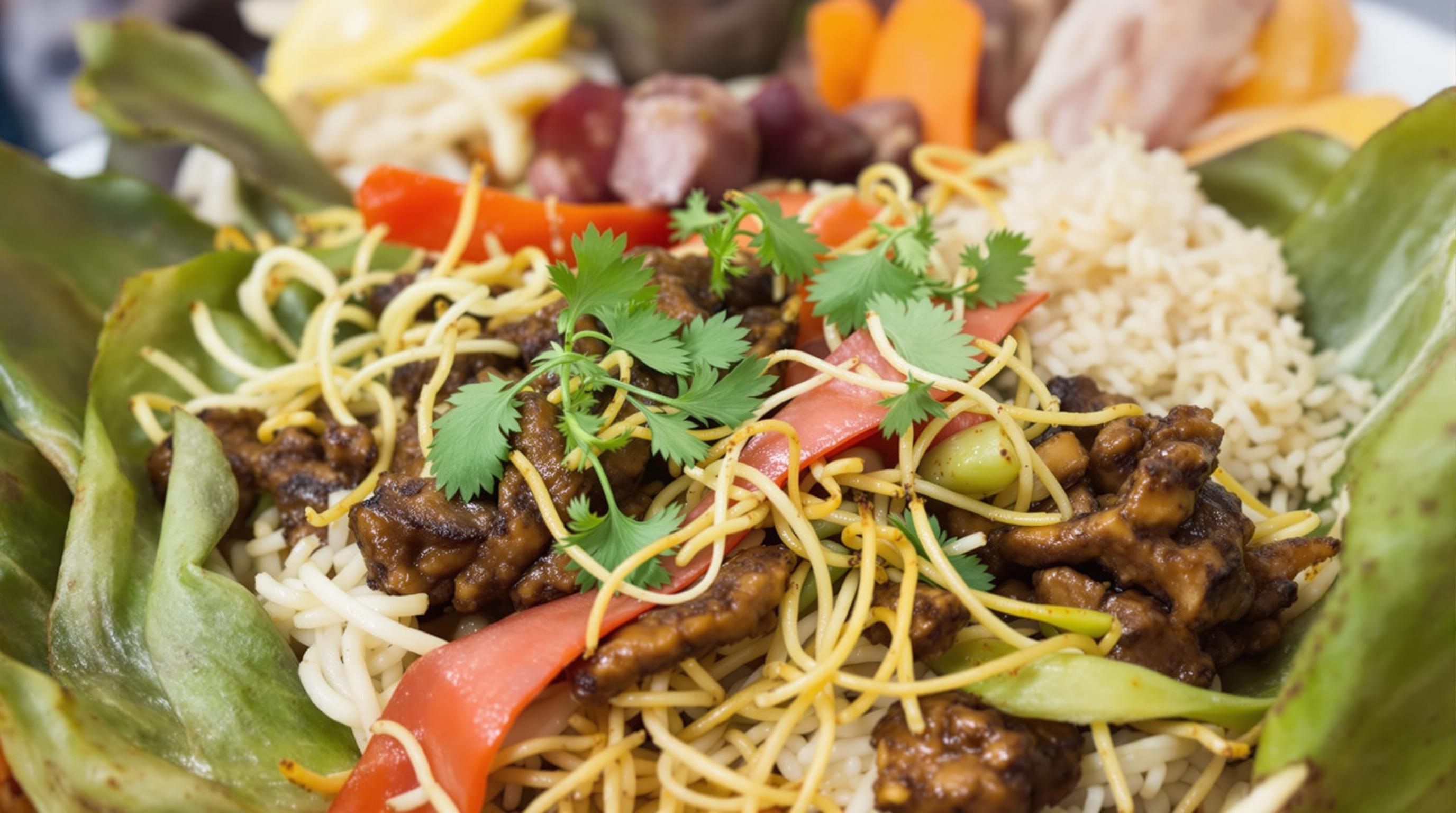Related Articles
- Culinary Cartography: The Unexpected Foods Shaping Local Identity in Urban Landscapes
- Flavors of the Forgotten: Rediscovering Culinary Traditions in the Shadows of Modern Food Trends
- Palate Pilgrimage: The Unlikely Fusion of Ancient Rituals and Modern Local Fare
- Ecosystem Engineers: Celebrating the Role of Nature-Based Solutions in Transforming Eco-Travel Experiences
- Ghost Towns and Green Trails: Unearthing Sustainable Journeys Through Forgotten Landscapes
- Hidden Footprints: Decoding the Carbon Footprint of Digital Nomadism in Edging Towards Sustainable Getaways
12 Obscure Local Cuisines That Illuminate Surprising Culinary Heritage and Encourage Adventurous Dining in Unexpected Places
12 Obscure Local Cuisines That Illuminate Surprising Culinary Heritage and Encourage Adventurous Dining in Unexpected Places
12 Obscure Local Cuisines That Illuminate Surprising Culinary Heritage and Encourage Adventurous Dining in Unexpected Places
1. Buryat Cuisine - Mongolia's Hidden Gems
Buryat cuisine, originating from the indigenous Buryat people of Siberia, is a fascinating fusion of Asian and Russian influences. Traditional dishes often feature meat, especially lamb and beef, accompanied by dense, hearty dumplings known as buuz. The use of fermented dairy products adds a unique tang, highlighting the region's nomadic lifestyle that emphasizes preservation techniques adapted to harsh climates.
One particularly intriguing dish is khuushuur, a fried meat pastry that is a staple during festive occasions, offering a glimpse into the celebration of Buryat culture. Food in Buryatia is not just nourishment but also a symbol of community and hospitality, with dishes often shared among family and friends during gatherings.
For those adventurous enough to taste Buryat cuisine, visiting the regions around Lake Baikal offers an authentic experience. While often overlooked in the grand tapestry of world cuisines, Buryat food is a testament to the resilience of cultures and their ability to thrive in challenging environments.
2. Etruscan Cuisine - Italy's Culinary Roots
The ancient Etruscans, a civilization that predated the Romans in what is now Tuscany, have left behind a culinary legacy that is both intriguing and often forgotten. Dishes were rich in flavors from the Mediterranean, utilizing local grains and legumes, alongside meat and fish. Typical ingredients include chestnuts, a staple in Etruscan cooking, which still feature in Italian cuisine today.
Etruscan cuisine emphasized communal dining, mirroring the societal values of the time. The people utilized seasonal produce, making their meals not only a reflection of regional biodiversity but also an early form of farm-to-table eating. Recipes have evolved over centuries, incorporating elements from various cultures while still maintaining a connection to Etruscan traditions.
Exploring Etruscan culinary heritage can be a delightful venture while visiting areas like Chiusi or Volterra. Culinary tours that revive ancient recipes present a chance to taste dishes that have survived the test of time, connecting diners with Italy’s rich past.
3. Pirog - A Taste of the Balkans
The Balkan states are home to a plethora of dishes, but pirogi stands out as a delightful, lesser-known culinary treasure. These pastry pockets are filled with various ingredients, such as meats, cheeses, and vegetables, and can be both boiled and baked. Each country in the region has its unique spin, making pirogi a versatile dish treasured in Slavic households.
While pirogi can vary widely—some are sweet, filled with fruits, while others are savory—what remains consistent is their role in traditional celebrations and family gatherings. Making pirogi is often a communal effort, transforming meal preparation into an event that emphasizes family bonds and cultural storytelling.
To truly appreciate pirogi, wander through the bustling markets of Sofia or Zagreb, where street vendors serve them fresh. The experience of sampling local variations provides insight into the intricate web of cultural influences that shape Balkan cuisine.
4. Poutine - Culinary Identity of Quebec
While poutine may have become somewhat mainstream, its roots in Quebec reflect a rich tapestry of local ingredients and culinary ingenuity. This dish consists of fries topped with cheese curds and gravy, a comfort food that speaks to the cultural identity of French-speaking Canadians. The origins of poutine are shrouded in playful debate, as several towns claim to have invented it.
Poutine is more than just a meal; it embodies the spirit of Quebec's food culture, where home-cooked meals merge with fast food traditions. Variations of poutine can be found throughout the province, each featuring local tastes—like adding smoked meat or a variety of sauces—showcasing regional creativity.
For an authentic taste of poutine, exploring local dives in Montreal is essential. These establishments keep the tradition alive while offering their exclusive takes on the dish, ensuring that every bite is a celebration of Quebec's culinary heritage.
5. Guatemalan Pepián - A Heritage Blend
Pepián is a traditional Guatemalan stew that combines indigenous and Spanish influences, making it a dish rich in history and flavor. The preparation involves a blend of meats, typically chicken or beef, simmered in a rich sauce made from roasted tomatoes, peppers, and spices, enhanced by the unique addition of ground seeds like sesame.
This beloved dish is often enjoyed during festivities and family gatherings, symbolizing the hospitality and vibrant culture of the Guatemalan people. The labor-intensive nature of pepián reflects the dedication to preserving culinary traditions that have been passed down through generations, making it a centerpiece of Guatemalan heritage.
Visitors seeking to savor pepián can find local restaurants in cities like Antigua, where chefs often offer a glimpse into the dish's preparation. Experience the depth of flavor and cultural significance in every bite, as pepián truly embodies the fusion of ancient and modern cooking techniques.
6. Indonesian Rendang - Flavors of the Archipelago
Rendang, a dish originating from the Minangkabau ethnic group of Indonesia, is deliciously rich and complex. Composed mainly of beef and cooked in a mixture of coconut milk and a vibrant array of spices, rendang is typically slow-cooked to ensure the meat absorbs the fragrant flavors, leading to a tender and aromatic dish.
This dish represents not only the culinary arts of Indonesia but also the culture of communal feasting, as rendang is often served during special occasions and festivities. Its recognition as one of the world’s top foods speaks to its depth of flavor and cultural significance, merging culinary techniques that emphasize both tradition and modern tastes.
For a genuine taste of rendang, exploring street markets in cities like Padang reveals variations that might include different proteins or spice levels, inviting adventurous eaters to delve into an authentic Indonesian culinary experience.
7. Acarajé - Bahia's Culinary Delight
Acarajé from Brazil is a street food that showcases the influence of African culinary traditions in Bahian cuisine. Considered a popular snack, acarajé consists of deep-fried black-eyed pea balls that are typically split open and filled with vatapá, a spicy shrimp paste, and a variety of accompaniments like salad and hot sauce.
This dish is steeped in African heritage, originating from the Yoruba people, and its preparation is often linked to street vendors known as "baianas." The vibrant flavors and colors not only highlight the culinary skills but also reflect the rich cultural history of Bahia, blending indigenous, African, and Portuguese elements.
Travelling through Salvador, one can find numerous acarajé stands, where the dish is freshly made. The experience of enjoying this flavorful snack is enhanced by the lively local music and vibrant street life that characterizes Bahian culture.
8. Oaxacan Mole - A Sauce of Many Layers
Renowned for its complexity, Oaxacan mole is perhaps one of Mexico's most famous but least understood culinary creations. Mole is a rich sauce made using a myriad of ingredients such as chiles, chocolate, spices, and various nuts. This intricate recipe varies greatly depending on the region and the chef, with Oaxacan mole negro being a staple.
Mole not only serves as a meal’s sauce but also represents the convergence of indigenous and colonial ingredients, marking Mexico’s culinary history. Making mole is often an all-day affair, emphasizing community and familial participation in the cooking process, akin to a culinary ritual.
To experience authentic mole, a visit to Oaxaca during the festive season is recommended, where local kitchens and markets come alive with the preparation of this iconic sauce. The chance to taste different mole variations delivers a rich narrative about Oaxaca’s diverse culture and history.
9. Khachapuri - Georgian Cheese Bread
Khachapuri, a traditional Georgian dish, is a warm, cheese-filled bread that is often shaped like a boat and topped with a runny egg and butter. The dish has many variations, reflecting the diverse geography and climate of Georgia’s regions, with each offering a unique twist on ingredients and flavors.
The art of making khachapuri is often a source of pride among Georgian families, with gatherings centered around the enjoyment of this dish, underscoring the importance of food in their culture. It is a north-south culinary journey as each area claims its distinctive style of preparing this beloved bread.
A visit to Georgia provides an opportunity to taste khachapuri in its most authentic form, with popular spots in Tbilisi offering a taste that encapsulates warm hospitality alongside deep-rooted traditions. The experience of savoring khachapuri is a true reflection of Georgia’s rich culinary heritage.
10. Balinese Lawar - A Flavorful Tradition
Lawar is a traditional Balinese dish that combines vegetables, coconut, minced meat, and a variety of spices, creating a multi-textured and flavorful component of Balinese cuisine. This dish is not only consumed during festive occasions but is also integral to various rituals and ceremonies, showcasing Bali's deep cultural significance woven into its culinary practices.
With ingredients often sourced locally, lawar embodies the concept of a sustainable diet and reflects the relationship between the Balinese people and their land. The preparation of lawar typically requires community participation, where locals come together to create it, creating a social fabric that enhances cultural ties.
To experience lawar authentically, visiting local markets and attending ceremonies in Bali is essential. Engaging with locals while enjoying this dish provides visitors with an understanding of Bali's unique cultural richness and diversity.




